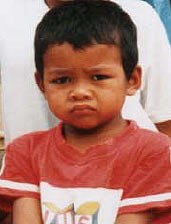Che Wong, Siwang in Malaysia

Photo Source:
Copyrighted © 2025
Southeast Asia Link - SEALINK All rights reserved. Used with permission |
Send Joshua Project a map of this people group.
|
| People Name: | Che Wong, Siwang |
| Country: | Malaysia |
| 10/40 Window: | Yes |
| Population: | 600 |
| World Population: | 600 |
| Primary Language: | Cheq Wong |
| Primary Religion: | Ethnic Religions |
| Christian Adherents: | 0.50 % |
| Evangelicals: | 0.49 % |
| Scripture: | Translation Started |
| Ministry Resources: | No |
| Jesus Film: | No |
| Audio Recordings: | No |
| People Cluster: | West Malaysia Indigenous |
| Affinity Bloc: | Malay Peoples |
| Progress Level: |
|
Introduction / History
The Che Wong are one of the nineteen original Orang Asli people groups living in Peninsular Malaysia. They belong to the Senoi subgroup. They are actually known as Siwang but Che Wong is a more familiar name because this is how people know them.
What Are Their Lives Like?
The Che Wong are found in groups living near the villages of other tribes and those still living in the jungles. Their settlements are in the Raub district of Pahang, Perak, Selangor, and Johor. The deep forest areas constitute the Che Wong's environment. The forest is a cool place that provides the basis for their subsistence, is a barrier for diseases, and affords relief from the heat of the villages. While some of the Che Wong live near Malay villages, others still live deep in the rainforest and live off hunting, fishing, and collecting forest produce.
The Che Wong are mainly farmers and hunters. They live close to, or within, forested areas where they engage in hill rice cultivation and grow a little tobacco. Cassava is planted all around the field to deter animals that might otherwise ruin the highly valued rice crops. Small manioc gardens are maintained in the forest and provide supplies for hunter-gatherers. They also trade in petai, durian, rattan, and resins to earn cash incomes. The Che Wong men hunt pig, deer, and bear while women catch tortoises, monitor lizards, and porcupines. Women also help make and inspect pig traps in the field. Fishing is carried out in rivers and streams, with hooks, nets, and poison. Fishing by hand brings in the best catch.
The Che Wong settlements or camps move and follow the cycles of land clearing. Each residential unit is the nuclear family or the families of one household and includes two to six individuals. The extended family is economically self-sufficient and politically independent.
What Are Their Beliefs?
The Che Wong believe in the existence of numerous evil spirits that can be kept away by building campfires. One spirit greatly feared by the Che Wong is the bas, which they believe attacks the human soul for its food. Religious rituals are closely linked to their use of the forest. There are no specific ritual areas but there are traditionally dangerous places, dangerous species, and dangerous periods. Big ceremonies take place wherever there are strong mythological associations.
These associations entail many taboos regarding animals and plants found everywhere in the forest. There is no religious leader and any individual may use trance and chanting to communicate with these spirits, which are an integral part of the human environment.
What Are Their Needs?
Development projects are taking away forested areas where the Che Wong once thrived. Pray for adequate government protection for the environment that the Che Wong live in. Pray also that social ministry will arise from among believers to help meet the needs of the Che Wong.
Prayer Points
Pray for the Holy Spirit to call many from the Che Wong people to the Lord of lords.
Pray for the Lord to send and equip many workers from neighboring tribes to go to the Che Wong people.
Pray for Che Wong disciples to make more disciples.